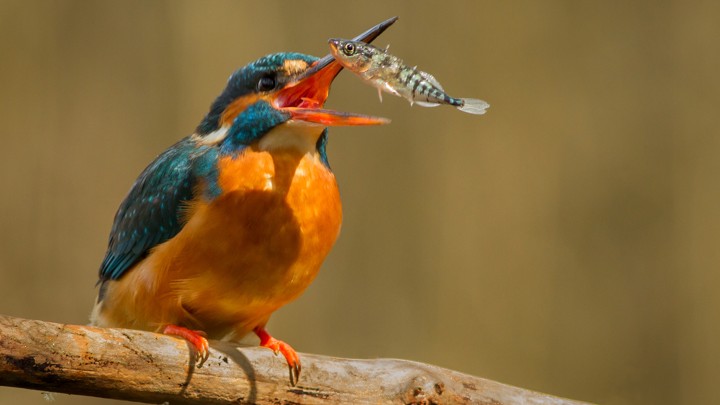Parasites Can Mind-Control Animals Without Infecting Them
A tapeworm is essentially a very long, parasitic towel with a grappling hook for a head. It attaches itself to the internal organs of its host with its fiendish head spines, and it absorbs nutrients through its tagliatelle-shaped body. Once fastened, it does very little. It has no mouth or gut, no circulatory or respiratory systems. Its sparse nerves culminate in a cluster that could barely be called a brain. And yet, this very simple creature can manipulate the minds of more complex animals, even without infecting them.
Consider Schistocephalus solidus. Like many tapeworms, this one has a complicated life cycle. It reproduces in the guts of waterbirds, which excrete its eggs in their droppings. After the tapeworm eggs hatch, the larvae infect small crustaceans called copepods. These are eaten by stickleback fish, which are then eaten by waterbirds, completing the cycle.
The tapeworm does not passively go along for this convoluted ride. When it enters sticklebacks, it somehow changes their behavior so they swim toward warmer water, where the worm can grow more quickly; at maximum size, it can make up half of a stickleback’s weight. The tapeworm also emboldens its hosts. They are more likely to venture outside the safety of a shoal. They are less likely to flee from predators. And consequently, they are more likely to be eaten by birds.
Nicolle Demandt and Benedikt Saus from the University of Munster developed a simple way of assessing the tapeworm’s control over its host. They would put groups of sticklebacks in a tank, lure them to the surface with floating patches of food, and then attack them with an artificial “bird,” a fake beak on a bent stick that could be jabbed into the water with a handle. “We built it from Lego,” says Jörn Peter Scharsack, who led the study. “It’s very simple but very efficient.”
After the attacks, groups of uninfected fish would flee to the bottom of the tank, to hide among the plants there. By contrast, infected sticklebacks stuck to the danger zone. “These guys do not care,” says Scharsack. “If you try to scare them they hardly respond.”
Their bold behavior could also influence their peers. Like many animals that live in shoals and flocks, sticklebacks are incredibly sensitive to the actions of their neighbors. Small decisions made by individuals can translate into large collective movements by the group. And if certain individuals are infected by a mind-controlling parasite, to an extent, the group is too.
Demandt and Saus demonstrated this by repeating their experiment with mixed groups of infected and uninfected individuals. They showed that if the infected were in the majority, the uninfected ones followed them, staying in the danger zone instead of fleeing. Such indirect control has never been documented before, and might benefit the parasite. If a larger shoal of devil-may-care fish stays at the water’s surface, predators might be more likely to find and attack them, again increasing the chances that they swallow an infected individual.

There are lessons here for humans, too. In classic experiments from the 1950s, Solomon Asch showed that volunteers could often be persuaded to give what were clearly wrong answers to simple questions if others around them, actually paid actors, answered wrongly too. In many cases, the volunteers were certain that the actors were wrong, but went along with their decisions nonetheless. A bad idea, just like a parasitic tapeworm, can also influence the minds of those who are not directly touched by it.
Source: – theAtlantic.com; https://www.theatlantic.com/science/archive/2018/06/what-tapeworms-really-want/563189/